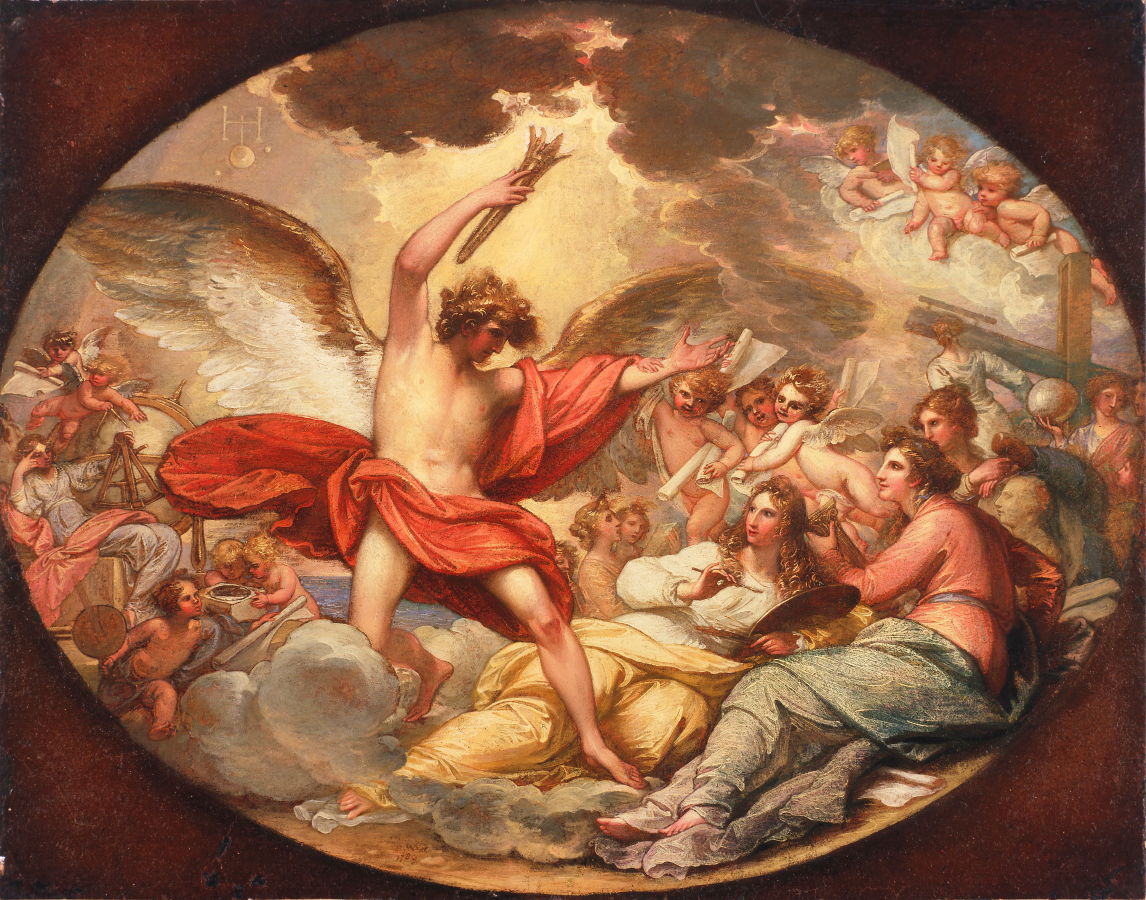Where Do Your Ideas Come From?

The truth is, we don’t usually know—and honestly, that’s a little bit horrifying sometimes.
For anyone in a creative field, work and success hinge on constantly having unique and original ideas; ideas about what to create, HOW to create it, and of course how best to present it to an audience. Usually, if an artist begins to find success it’s because they’ve been granted a momentary blessing of inspiration—from the muses, from the gods, from wherever! In fact, the word “genius” comes from the idea that creatives were once accompanied by small (sometimes) helpful spirits called “geniuses” that could dole out this blessing whenever they felt generous. So if someone had done something brilliant, it was because their “Genius was showing.” It kept artists humble by reminding them how precious inspiration is, and also gave them something to blame if they just weren’t really having a good day.
Today, artists are hired not only on their technical skill, but also their creative success. An artist might be noticed if he or she had a particularly productive surge of creativity, and then will be asked to do it again. They’ll likely even be given a deadline. This is incredibly threatening when any artist will tell you that they have little control over turning their creative switch on or off. Usually, we just hope that our genius will show up when we need them most.
However, anyone who wants to be creative will have better luck if they go out LOOKING for inspiration.
In the Middle Ages and the Renaissance, artists looked towards religion and ancient mythology to fuel their creativity. They spent their lives honing impressive skills that could convey well-known stories in ways that could bring them bursting into vivid life. Later on, artists like Van Gough and Claude Monet looked towards nature and their surroundings for inspiration, and used innovative techniques to convey scenery and landscape. In more recent times, Pop Artists and other modern creators have looked at popular culture, politics, and history for inspiration.
So what do all of these sources of inspiration have in common? Well, they’re relatable to audiences. Renaissance artists painted religious artwork because the era was a religious one. They illustrated famous myths, because those were stories that everyone knew. To some extent, this is what all artists have done—they paint scenes in France, because people think that France is beautiful. They create artwork that makes political statements because politics are important to the public.
Most art makes an attempt to connect the artist to the audience, and all members of that audience to one another—even when the art’s primary function is to make a statement or display an aesthetically pleasing scene.
Knowing this, it’s a little bit easier to find that genius when an artist is working on a new project, but it isn’t always guaranteed. Some days artists just have a hard time getting the creative juices flowing, and we all have our own ways of dealing with that. Some artists go on long walks, or work out. Some listen to music, or visit museums (a word which actually means “temple for the muses.”) As an illustrator who likes to make comics, I personally enjoy reading comic books and looking at the artwork of artists who are similar to me in order to find inspiration.
If none of this works for you, I fortunately have one last piece of advice in order to stir your creativity.
About two years ago, I was lucky enough to attend a talk given by British author Neil Gaiman, known for works such as “Coraline,” “The Graveyard Book,” and my favorite comic book “The Sandman.” He was asked by a member of the audience, like any artist, “Where do your ideas come from?” Mr. Gaiman gave a very long explanation in which he explained the lengthy processes through which some of his more well-known works came into being. Ultimately, however, he said that most ideas come from asking yourself questions. He gave three examples of things to ask when creating new work. He said to begin with questions that start with “What if…” “If only…” and “If this goes on…”
Questions starting with these three phrases, he explained, are usually rich with ideas that can take an artist down an entire cascade of creative thought processes.
- The Artist's Insight - A monthly blog special by Eric Maille -
I’ve been painting my entire life, but I think you’ll agree with me that being a painter doesn’t make you an artist. An artist must be willing to explore the fascinating world that exists behind paintings- a rich history of unique talents, creative imaginations, innovative techniques, and thoughtful self-expression.
I’ve spent a long time developing that insight and learning from the insight of others, and it's helped me to become a professional painter and illustrator living and working in Norman Oklahoma, and an instructor at Pinot’s Palette Bricktown. Now, once a month, I’ll be providing tips, tricks, and stories from a polished perspective, and an artist’s insight, so that even the casual painter, can become an art-lover and artist themselves!
Sincerely yours, Eric Maille

